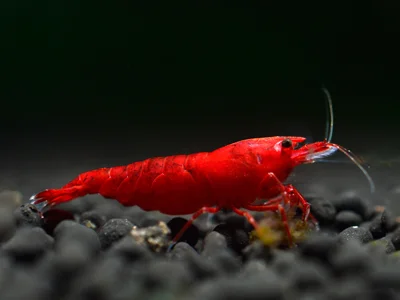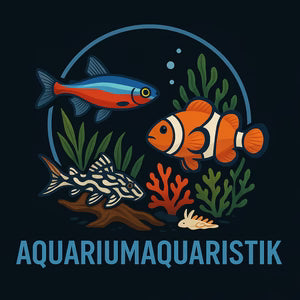AquariumAquaristik
Bloody Marry Shrimp - Neocaridina davidi
Bloody Marry Shrimp - Neocaridina davidi
Couldn't load pickup availability
The Bloody Mary shrimp ( Neocaridina davidi ) is one of the most intense red dwarf shrimp and stands out due to its deep red, almost translucent coloring. It is one of the most impressive color variants of the Neocaridina species and is a popular highlight in many aquariums. Its bright, dark red coloring makes it a fascinating eye-catcher, while at the same time it is easy to care for and adaptable.
Characteristics:
- Size : Females grow up to 3 cm, males remain slightly smaller.
- Coloration : The Bloody Mary shrimp is characterized by a very deep and strong red that appears almost transparent. This coloration is particularly intense and remains stable throughout the shrimp's life.
- Behavior : These shrimp are peaceful, sociable animals that like to be kept in groups. They get along well with other shrimp and peaceful fish and are very active in foraging.
Attitude:
- Aquarium size : Even a small aquarium of 20 liters or more is sufficient to keep a group of Bloody Mary shrimp. Dense planting with hiding places such as moss, roots and stones is recommended.
- Water values : The Bloody Mary shrimp is robust and thrives at temperatures between 18 and 28°C. It prefers soft to medium hard water and a pH value of 6.5 to 8.0. Stable water values help to maintain its intense coloring.
- Food : They feed on algae, leftover food, dead plant parts and special shrimp food. As useful algae eaters, they help to keep the aquarium clean.
- Reproduction : Reproduction is easy in the aquarium. Females carry the eggs under their abdomen and after about 30 days the young shrimp hatch and are immediately independent.
Special features:
The Bloody Mary shrimp is one of the most beautiful and fascinating dwarf shrimps due to its deep red, translucent coloring. It is easy to care for and ideal for beginners as well as experienced aquarists. Its hardy nature and easy maintenance make it suitable for community and nano aquariums. Thanks to its diligent algae-eating properties, it also helps to keep the aquarium clean.
Share


